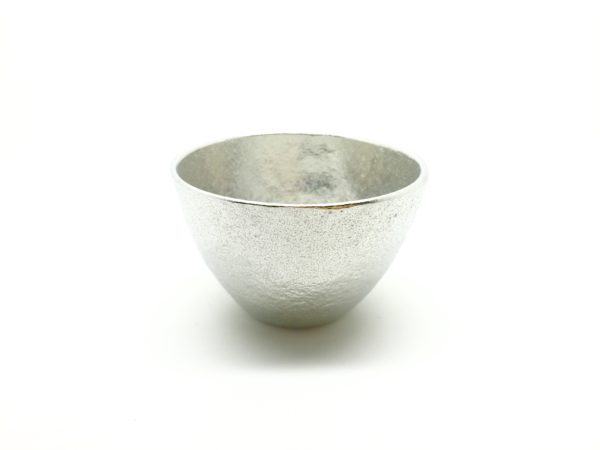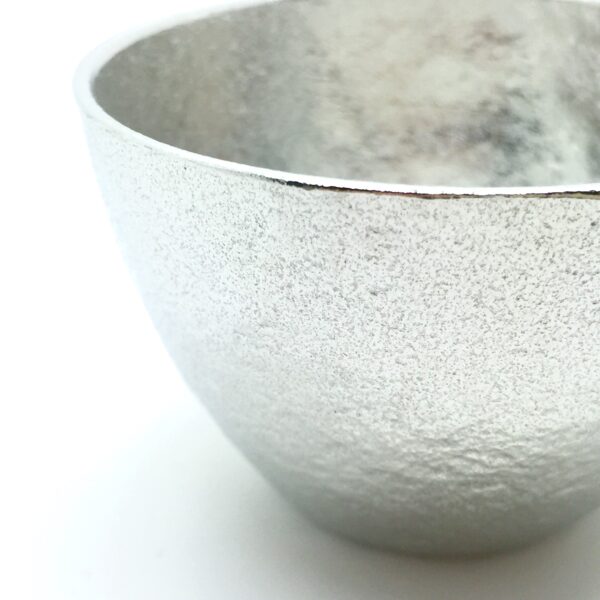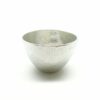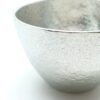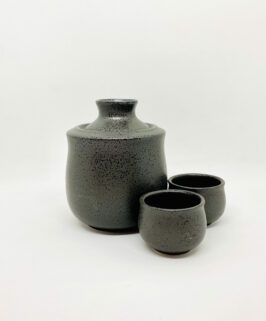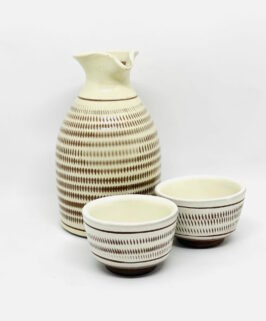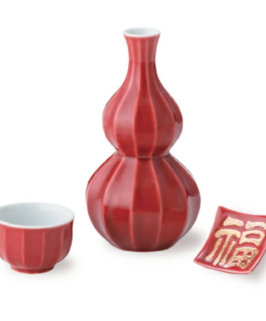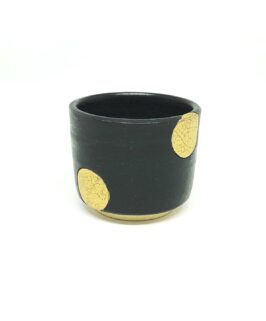Description
It is a standard shaped Tin Silver sake cup ; It can be used as sake cup, seasoning cup and various table top accent, accessory container, etc.
Its Material
NOUSAKU uses pure tin. It is common to add other metallic materials to provide durability and facilitate cutting work, but NOUSAKU uses tin without such additives. Accumulated experience of skilled craftsmen enables us to produce these unique pieces. Known as the most expensive metal after gold and silver, tin is very malleable and flexible. Though having nearly the whiteness of silver, it does not rust easily nor will air tarnish it readily. It is significantly antibacterial, and also known as a material with high heat conductivity. Tin ware cooled in a refrigerator for 2-3 minutes will keep the dish fresh and cold. Furthermore tin removes excessive bitterness from sake and is known to absorb impurities and purify water, and that enables us to enjoy liquor.
Its Production
NOUSAKU uses a selection of materials and casting techniques including raw, self-hardening, lost wax, and original silicon casting method to establish a high-mix, low-volume production system. Working on the foundations of advanced techniques developed through history, and also employ new techniques such as NC processing. By achieving a balance between the machine and precision handwork of our craftsmen, we have been able to develop a flexible production system. All-inclusive production from planning to manufacturing ensures a stable supply of high-quality products.
Green sand casting
chuzoGreen sand casting is a technique for casting by pressing out the intended form using mold sand mixed with a small amount of water and clay. It enables a mold to be created quickly, making it cost effective and appropriate for mass production. While the two-piece mold limits the product shape into something that can be “sandwiched,” the use of a middle mold can produce hollow products such as flower vases and Buddhist altar fittings. Unlike other casting methods, green sand casting does not fire or add chemical treatments to the mold before casting, which is why it is called “raw casting (生-型)” in Japanese. NOUSAKU had been using this method since its beginning, and still, is our main method of casting. Our wind bells, flower vases, tin plates, and several sake wares are made by this method.
Features of casting methods at NOUSAKU
-Green Sand Casting: Typical and traditionalcasting method / Appropriate for making in large quantities
-Silicon Casting: Appropriate for expressing complex and precise details. Used only for casting tin products such as our flexible wares, chop stick rests, several sake cups and small plates.
-Self-hardening Casting: Mainly used for making large products. Generally used for casting furniture parts, chandeliers, luminaires, objets.
-Lost-wax Casting: Appropriate for expressing complex and precise details


